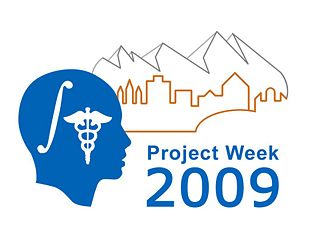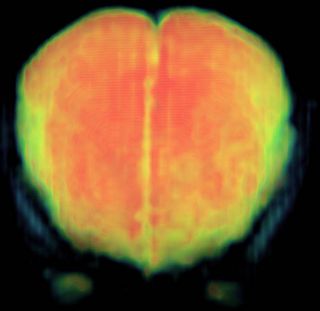Difference between revisions of "2008 Winter Project Week:fmri image analysis"
| Line 26: | Line 26: | ||
<h1>Approach, Plan </h1> | <h1>Approach, Plan </h1> | ||
| − | Our approach is | + | Our approach is based upon SPM (Statistical Parametric Mapping) toolkit widely used in the fMRI community. Our challenge is to build these algorithms into the Slicer3 infrastructure. Our main purpose at the Project Week is to work with our collaborators in order to define the scope of this project, decide upon the details of the fMRI framework in Slicer3, and identify other open problems with respect to fMRI analysis. |
</div> | </div> | ||
Revision as of 20:03, 19 December 2007
Home < 2008 Winter Project Week:fmri image analysis Return to 2008_Winter_Project_Week |
Key Investigators
- Ohio State University: Firdaus Janoos, Raghu Machiraju
- BWH: Steve Pieper, Wendy Plesniak
- Kitware: Luis Ibanez
Objective
To implement an fMRI analysis pipeline in the Slicer 3 framework including:
a) Slice timing correction (open)
b) Inter-slice motion correction (done)
c) Spatial normalization (open)
d) Co-registration of functional and structural data (open)
Approach, Plan
Our approach is based upon SPM (Statistical Parametric Mapping) toolkit widely used in the fMRI community. Our challenge is to build these algorithms into the Slicer3 infrastructure. Our main purpose at the Project Week is to work with our collaborators in order to define the scope of this project, decide upon the details of the fMRI framework in Slicer3, and identify other open problems with respect to fMRI analysis.
Progress
June 2007 Project Week
During this Project Week, we did a lot of algorithmic design work, focusing on leveraging optimal or geodesic path information to provide for volumetric segmentations of fiber bundles. Working with Marek Kubicki and the Harvard DBP, we were able to begin the process of applying our algorithm to the full cingulum bundle with new labelmaps and to a new fiber bundle - Arcuate. We have recently achieved significant results in volumetric segmentations using a locally-constrained region-based technique (see the images above).
Jan 2007 Project Half Week
We finished the itkDirectionalIterator which will be needed in the Fast Sweeping implementation. Furthermore, we made progress in porting our Matlab code to ITK.
References
- J. Melonakos, M. Niethammer, V. Mohan, M. Kubicki, J. Miller, A. Tannenbaum. Locally-Constrained Region-Based Methods for DW-MRI Segmentation. Submitted to MMBIA 2007.
- V. Mohan, J. Melonakos, M. Niethammer, M. Kubicki, and A. Tannenbaum. Finsler Level Set Segmentation for Imagery in Oriented Domains. BMVC 2007.
- J. Melonakos, V. Mohan, M. Niethammer, K. Smith, M. Kubicki, and A. Tannenbaum. Finsler Tractography for White Matter Connectivity Analysis of the Cingulum Bundle. MICCAI 2007.
- J. Melonakos, E. Pichon, S. Angenet, and A. Tannenbaum. Finsler Active Contours. IEEE Transactions on Pattern Analysis and Machine Intelligence, to appear in 2007.
- E. Pichon and A. Tannenbaum. Curve segmentation using directional information, relation to pattern detection. In IEEE International Conference on Image Processing (ICIP), volume 2, pages 794-797, 2005.
- E. Pichon, C-F Westin, and A. Tannenbaum. A Hamilton-Jacobi-Bellman approach to high angular resolution diffusion tractography. In International Conference on Medical Image Computing and Computer Assisted Intervention (MICCAI), pages 180-187, 2005.
